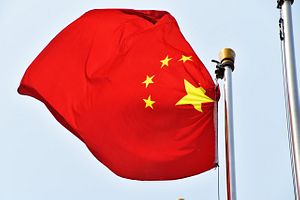As China heads into its Party Congress next week, concerns have been surfacing over the past few months about the state of the world’s second-largest economy, which has implications not just for Beijing but also neighboring Southeast Asian states. The recent downgrading by Standard & Poor’s (S&P) was one recent sign of this, and it bears watching within this broader context.
The last time S&P downgraded China was in 1999, when the Asian Financial Crisis began biting into Beijing’s spending ability and Chinese businessmen stunned their international partners by unexpectedly pulling out of joint ventures.
S&P’s move follows a downgrade by Moody’s Investor Service in May and was delivered weeks before the all-important Communist Party Congress. Some analysts have argued the timing was deliberate, political, and, given China’s meteoric rise in the debt stakes, late.
Total debt has quadrupled since the global financial crisis erupted almost 10 years ago and stood at $28 trillion by the end of last year. This prompted the International Monetary fund to revise its outlook recently.
The IMF expects debt, as a proportion of gross domestic product, to increase to almost 300 percent by 2022 from a previously expected 270 percent of GDP. These are dreadful numbers and could signal a second phase in a major Chinese economic downturn.
“International experience suggests that China’s credit growth is on a dangerous trajectory, with increasing risks of a disruptive adjustment and/or a marked growth slowdown,” the IMF said.
To be sure, some other indicators, including the slight raising of China’s growth forecast by the IMF earlier this month, can temper some of this pessimism. But even these more optimistic outlooks warn of similar risks and warn of a continued cooling of Beijing’s economy, largely around credit and capacity concerns.
China’s rapid economic expansion has no doubt heralded enormous and unprecedented benefits for ASEAN, lifting millions of people out of absolute poverty and redefining the region’s middle classes. Twenty percent annual growth in ASEAN exports to China was the norm for around two decades.
That came to an end two years ago, with a collapse in commodity prices and a devaluation of regional currencies amid stock market volatility. However, that correction was paltry when compared with the unparalleled growth delivered since the late 1990s.
Most of the debt used to fund recent Chinese growth, albeit at far more modest levels, has been raised over the last five years. In one form or another, some of that money has also been used to fund infrastructure projects around the region; ports, dams, airports, highways, and rail, some of which factor into grander Chinese initiatives like the One Belt One Road (OBOR).
“Buy now, pay later, no strings attached” has been the sales pitch from state owned enterprises (SOEs) running Beijing’s foreign policy agenda. But debt is losing its clout as the IMF noted; credit is becoming far less effective as a means of stimulating economic activity.
It said China required three times the amount of credit in 2016 than it did in 2008 in order to achieve the same level of growth.
Days of the current credit bubble appear numbered. That leaves Beijing with little alternative but to simply print more money in order to keep economic growth at a respectable level until an orderly correction can be orchestrated by central state planners.
We could see some of this correction after the Party Congress and into 2018. But, in the meantime, Deutsche Bank has noted the growth in printing money and cash circulation – made through loans in renminbi – is simply “unsustainable” and a threat to financial stability.
Whether an orderly downturn can be choreographed as Chinese policymakers and some of their supporters would like is dubious and unlikely at best. That only further raises the possibility of Beijing eventually calling in the chips from its regional neighbors whom it lent to when times were good. For ASEAN states, many of whom have their own domestic challenges (for which some have been relying increasingly on Beijing to manage) suffice to say that this would be far from ideal.
Luke Hunt can be followed on Twitter @lukeanthonyhunt

































